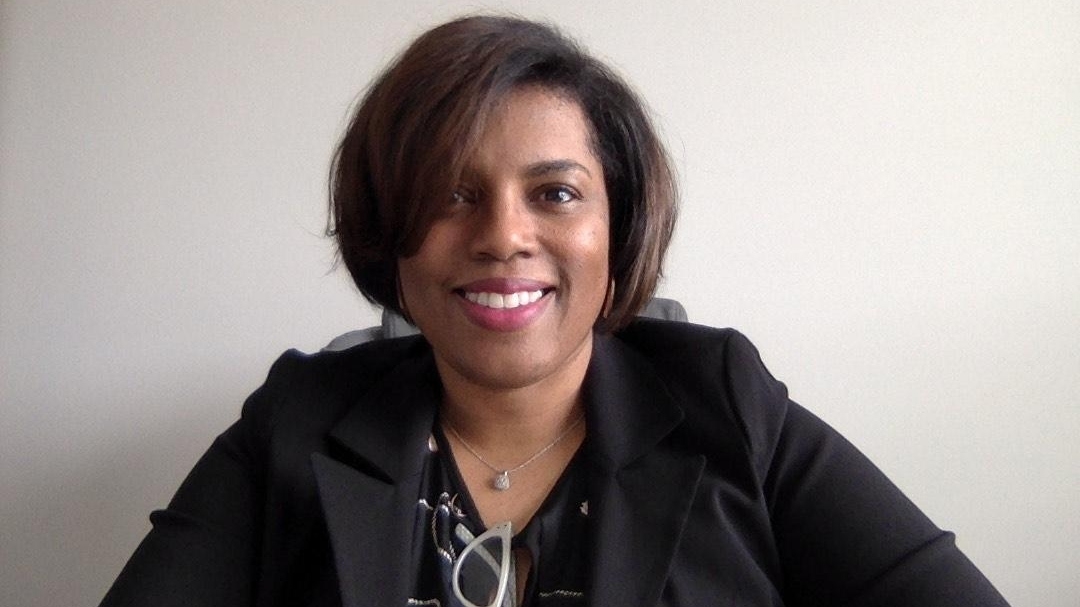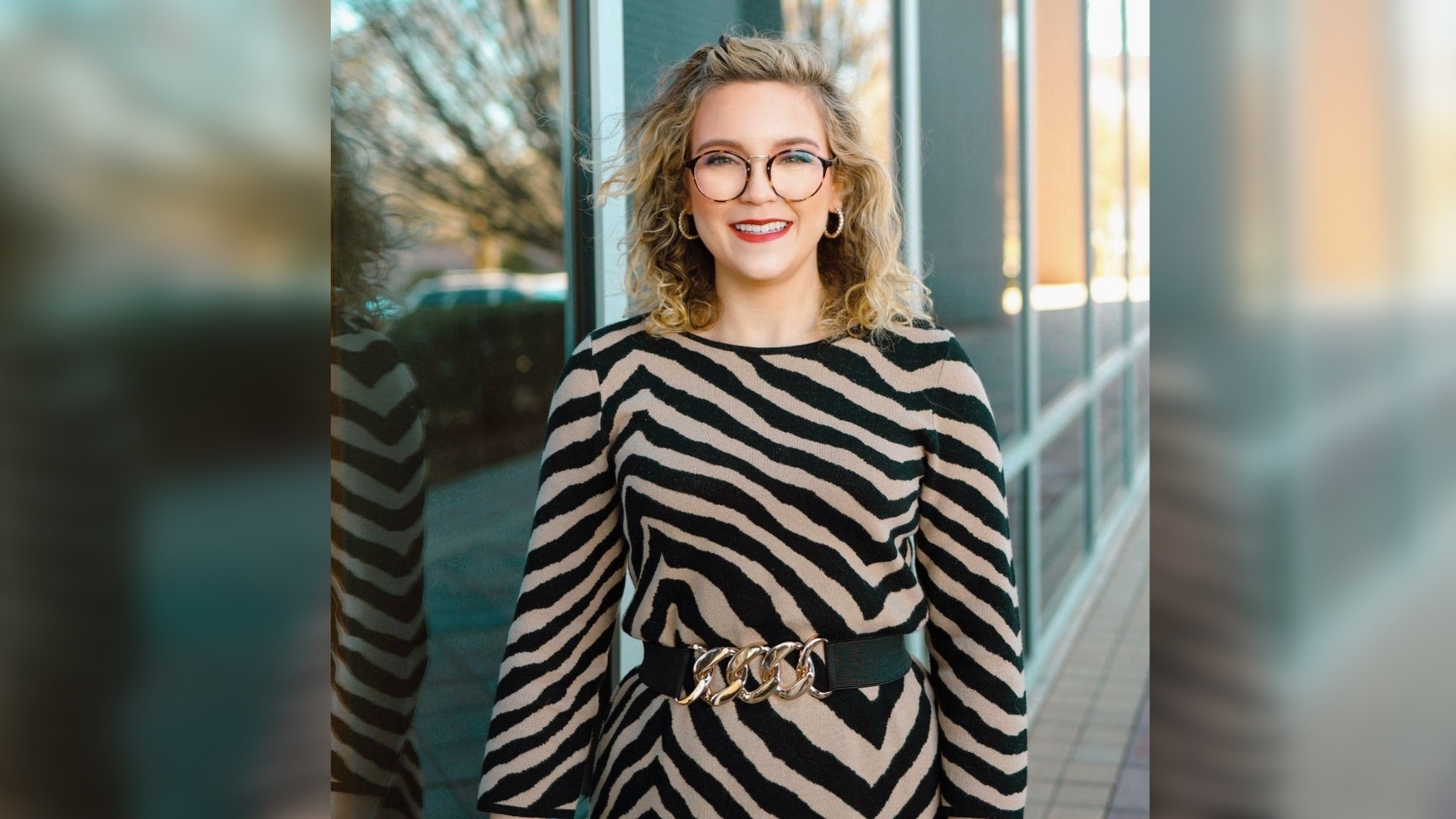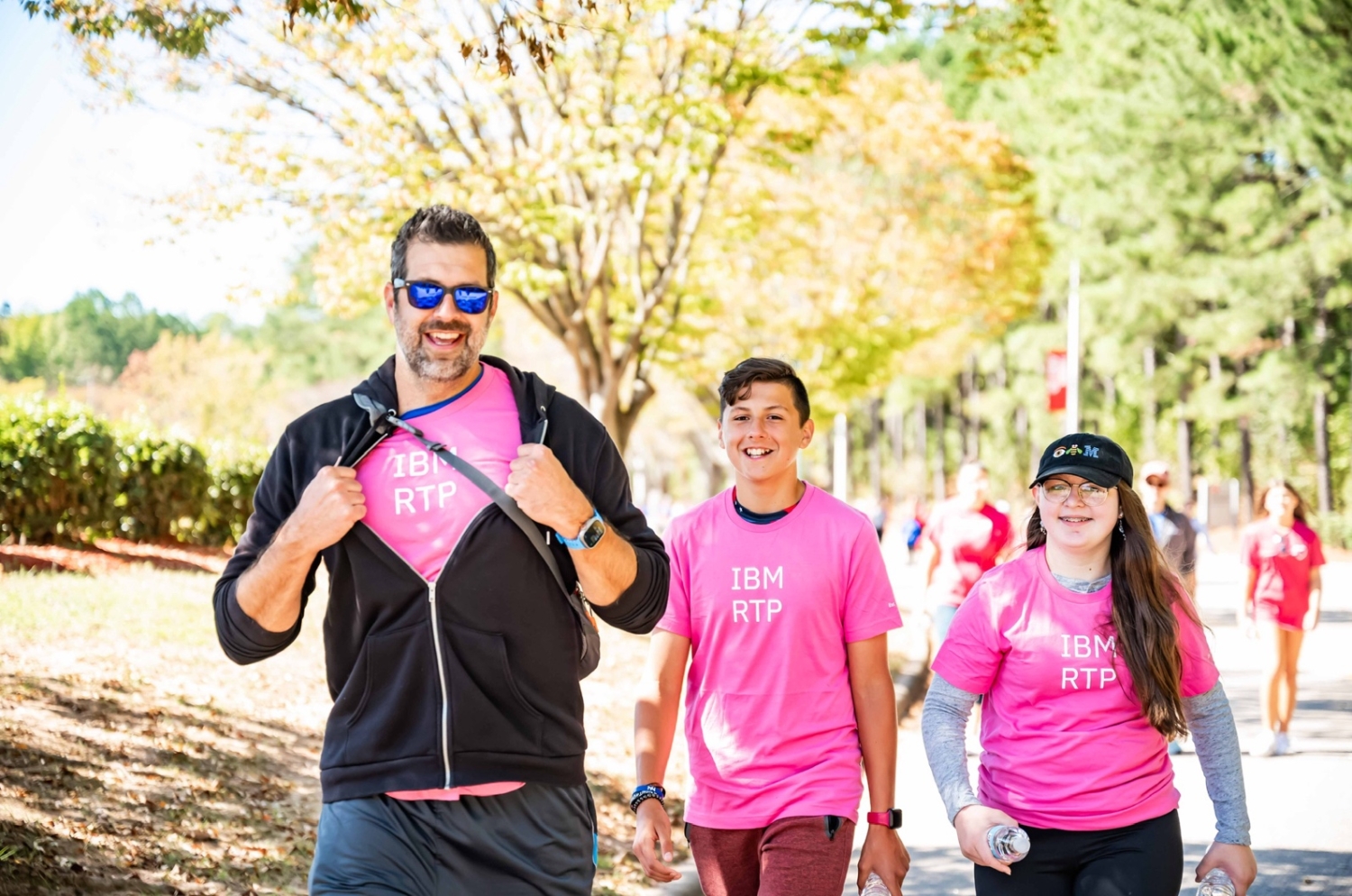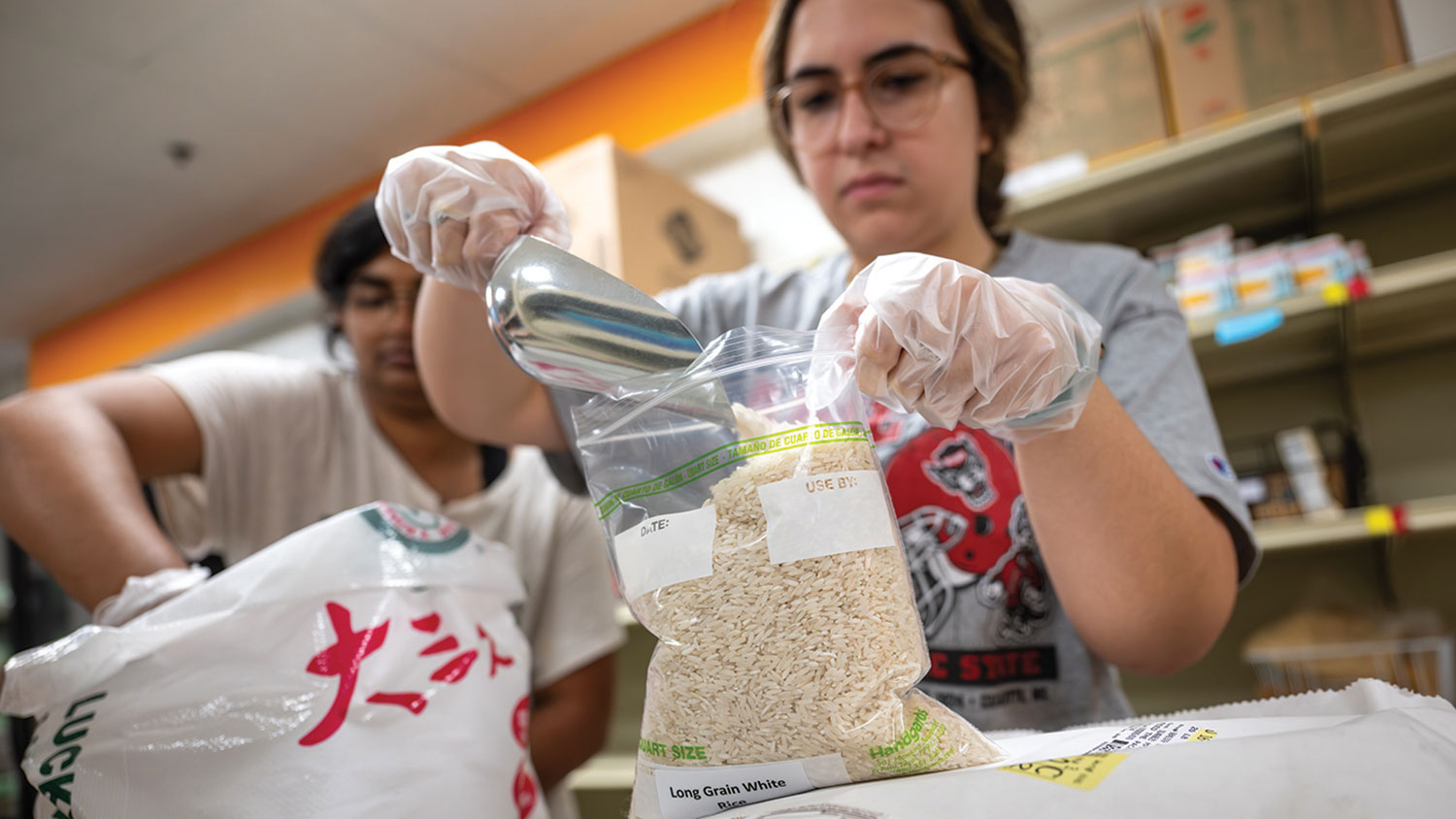By Samantha Beavers
A Raleigh native and NC State alumna, Tracy Edwards has accomplished a lot during her 23-year career – most of which has been in the pharmaceutical industry based in Durham, N.C. And as she looks ahead to the future, she still has a few tricks up her sleeve – which is what led her to Poole College of Management’s Master of Management, Risk and Analytics (MRA) program.
In fact, Edwards has spent the last few years searching for a program just like it. So, when she saw Poole College’s announcement about the new MRA program, she couldn’t believe her eyes.
“I wanted something that integrates data analytics and risk management and just hadn’t been able to find what I’m looking for,” Edwards says. “I’ve even tried a few times to work with schools to customize the curriculum to fit my needs – and they just wouldn’t budge. So when I saw the announcement pop up on LinkedIn, I was like ‘No way! Who came up with this?’ and immediately applied. It’s truly a one-of-a-kind program.”
As she prepares to start the program this fall, she’s been reflecting on how far she’s come – and she can’t help but remember her first job and laugh.
“I took a very boring job formulating paints in Cary, N.C. Talk about a job that’s like watching paint dry – that’s literally what I did. I sat and watched them dry to determine whether or not they would last long,” Edwards says.
At the time, she was an undergraduate student studying chemistry and textile chemistry at NC State. To gain more experience, she took on a second job as a third-shift pharmacy technician at “Big Wake” – the Wake Med facility over on New Bern Avenue in Raleigh. During her performance reviews, some of the pharmacists she worked alongside encouraged her to consider pharmacy school.
And so she did.
“As I sat there, watching paint dry, I thought about it,” she says. “Weighing my options, I figured I should try to get into a pharmaceutical company first – maybe start with a position in drug development and then figure out if I’d be interested in recommending and dispensing prescription drugs as a pharmacist.”
She decided to go for it. As her undergraduate career came to a close, she applied to Wyeth Vaccines – now Pfizer – in Sanford, N.C.
“I started there just after graduation and ended up staying there for about 10 years. And you know what – I had a ball. I would not hesitate to say that was one of the best companies I have ever worked for,” she says. “I learned so much during my time there, including how to be open-minded and the ins-and-outs of the pharmaceutical industry.”
“Having a degree from NC State is what allowed me to land the job. They told me it was the prestige and rigor of the chemistry program that moved my resume to the top. In an area like Raleigh, that says a lot,” she explains.
From there, her career in the pharmaceutical industry took off, taking her to bioMérieux, Alcami Corporation and Recipharm Laboratories in Durham, N.C. Then, in 2015, she decided to pivot.
“I’m very intentional and strategic in my career moves, and this was another one of those instances. I’m the type to try to find the niche – that thing that nobody’s thought of or the role involving the latest and greatest technology. I think that’s just the scientist in me. I’ve always wanted to create, innovate and be a trailblazer,” Edwards explains. “That’s ultimately what got me into risk management – that and the fact that I’m often applying for jobs I’m probably not qualified for.”
Wanting to try her hand at clinical research, Edwards decided to apply for an operational risk manager role at PAREXEL International.
“Even though I had never worked in clinical research and had never been in a formal risk management role, I decided to apply for this position tasked with implementing a quality risk management program,” she says. “And, let’s be clear – I had no clue what that was about. I didn’t know the first thing.”
What she did know, though, is that risk management is part of our everyday lives.
“If you think about it, we face risk every single day. From getting in the car in the morning to locking the door at night, we all do some form of risk management,” Edwards explains. “So during my interview, when they asked me to define risk and explain what it means, I gave a personal example. That’s how I got the job.”
Because Paraxel was piloting the program, they gave Edwards a few goals and guidelines to bear in mind – and then let her run with it.
“I had a lot of free rein to come up with a solid, robust process for managing risk. I got to meet with the company’s executive managers and tell them, ‘Hey, I looked through the company’s finances and strategic objectives and I’ve identified this as a risk – does this ring a bell or resonate with you?’ So I’d have all these conversations about what the risks were and how to reduce or minimize them,” Edwards explains. “I did it so well that they made me the risk manager for six of the functional areas at Paraxel. I’ve been doing risk management ever since.”
After Paraxel, she took off to the West Coast to work as a risk management consultant with Global Blood Therapeutics before transitioning back to the East Coast to lead the quality risk management program at Novartis Gene Therapies. Then, in 2021, she found an opportunity she couldn’t pass up.
“I was recruited for a position in pharmacovigilance risk management at Johnson & Johnson. While I could do risk management in my sleep, I didn’t have experience with pharmacovigilance in an organizational setting – so again, it was a position I felt unqualified for. But an opportunity to work for one of the top companies in the world? I couldn’t pass that up,” Edwards says.
She took the chance.
In her interview – a brutal one, she says – she was asked to give a presentation describing a quantitative approach to risk management. She explained that if the data is structured well enough, you can drop it into a predictive model and then put it in a dashboard to see the organization’s emerging risks. Needless to say – she got the job.
In starting the MRA program, Edwards intends to develop a skill set in analytics that will allow her to do just that.
“I know a lot of superb data analysts and strong risk managers – but I don’t know of anyone who’s both. But that’s going to be me once I get this degree under my belt,” she says. “Right now, I know how to explain to data analysts what I want to do with data, but being well-versed in analytics myself will open a lot of doors.”
Additionally, Edwards hopes to help develop an automation and predictive analytics tool to help organizations monitor their emerging risks.
“If organizations had something like this, it would take out a lot of legwork that risk managers have to do – like reviewing customer advocacy surveys and historical trends. I’d love to see something like this be developed so organizations can purchase and configure it to their own data. This is something that could be patented,” she explains.
And that leads into another goal of hers.
“My next power move is to get into patent work. While it’s a lateral move, it would give me the opportunity to apply risk management when assessing new patents and inventions. Having a master’s degree in analytics will help me there, too. Also, since there are very few female patent agents, it would put me right where there’s a disparity,” she explains.
At the end of the day, that’s Edwards’ biggest dream – to close disparities and create opportunities for those that come behind her.
“Because I was the first one to go to college in our family, my mom didn’t have a clue – so when I got dropped off on campus it was just like ‘Okay, bye! Go figure it out!’ It was intimidating – especially as a woman of color – but that’s what I did,” Edwards reflects.
“Everywhere I’ve gone in my career, it’s been the same thing. There have been so few people who look like me, especially in risk management. Through hard work, determination and the support of my family, I’ve made it through – but it shouldn’t have been so difficult. So, as I look ahead, I want to do whatever I can to bridge gaps and ensure that everyone has equal access to opportunity – that each classroom and workplace allows people with different backgrounds to experience a sense of pride and belonging. As those representing the future, they deserve that.”
This post was originally published in Master of Management Risk & Analytics.
- Categories:



